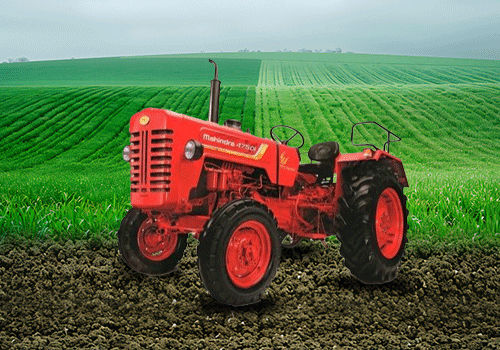Gravity Die Casting: A Superior Method And Affordable Option For Precision Metal Components
Gravity die casting is a widely used method in metal casting, which employs a handheld plug to fill a cavity with molten metal. It’s distinguished with accuracy, cost effectiveness, and quite a variety of applications making it an essential technology for industries such as automotive and aerospace among others.
In this specific blog, the procedure, advantages, and uses of gravity die casting will be comprehensively covered so as to introduce you to one of the manufacturing processes that is quite extensively used.
To know more about Gravity die casting -
https://www.indianmetal.solutions/
What is Gravity Die Casting?
Gravity die casting also known as permanent mold casting involves the pouring of molten metal into reusable metallic molds that are shaped by the action of gravity. Unlike high pressure die casting, the use of external force to fill the mold cavity is completely eliminated as gravitation force is relied on.
Being composed of steel or cast iron means that these molds are quite durable which in turn makes the whole procedure economically viable especially when bulk production is required.
The Gravity Die Casting Process
The process of gravity die casting involves a number of steps starting with:
1. Preparing the molds
Before being used, the mold has to go through a cleaning process first. Then a refractory material is applied to guide in the removal of the finished part and limit the occurrence of stickiness into the mold.
In order to control thermal shock, the mold is heated to a certain predetermined temperature prior to the deposition of the filler so as to allow the molten metal to flow properly and easily into all sections of the mold.
2. Pouring
Aluminum, magnesium or copper alloys in liquid form are injected or poured into the filling mold using either a filling or injecting mold.
During the hot metal pouring process, the configuration of the cavity created within the mould allows for the enclosed molten metal to spread throughout and occupy the given cavity in its entirety.
3. Hardening and Cooling
A space created in the mould due to cooling and solidification of a hot liquid is said to have acquired the shape 'desired’ which in this case is the shape of the cavity of the mould.
This depends on the material and the thickness of the casting and the time of cooling may be taken in this case in the absolute sense.
4. Removal
After allowing appropriate cooling, unclamping the mold allows the metal set within it to come out of the mold when tensile force is applied to it.
This enables the mold to be ready for the next operational cycle of casting.
5. Follow up Operations
Apart from the processes of dripping, machining and surface treatment which are used to enhance the shape of the cast part’s surface quality standard, there are many other possibilities that one may use cutting models to help meet the standard better.
The reasons given above cause gravity die casting to be much adopted by the manufacturers.
1. Size Precision & Repeatability
Gravity die casting is an engineering science of fabricating parts with high precision and close tolerances.
Since molds are used repeatedly, quality will have to be consistent across most production runs.
2. Cost-Effectiveness
The economies are related to medium and in many instances, high production due to the re-use of molds.
And even lower labor and material costs contribute further to the costeffectiveness.
3. Scope of Applications
The metal die casting can be achieved using a number of metals and alloys which include brass, barium and zinc.
This can be applied to components which have simple as well as complex geometry.
4. Enhanced Mechanical Properties
This results in a more refined grain structure being developed which in turn enhances the mechanical properties of a cast part because of the manufacturing cooling procedure.
This augments the strength and durability of the components.
5. Decrease in Cavity Density
Melted metal is poured by passing it through a channel and into the cavity which prevents the trapping of air or porosity in the end product.
Uses of Gravity Die Casting
Gravity die casting is done in a number of factories producing quality metal components. Some of the uses include:
1. Automotive Industry
Parts of an engine such as a turbocharger, cylinder heads, and manifolds.
Suspension system and body work.
2. Aerospace Industry
Certain brackets, cages and landing gears which are light and strong components in making of airplanes.
3. Electrical and Electronics
Heat sinks, sheaths, and connectors which need good thermal and electrical requirements.
4. Industrial Equipment
Sections of pumps, valves and compressor for industrial purposes.
5. Consumer Goods
Knobs and ornamental components for electrical and other household appliances and furniture’s.
Materials Used in Gravity Die Casting
A number of metals and alloys can be used in gravity die casting such as:
Aluminum Alloys: Suitable for complex shapes as they are light and do not corrode.
Magnesium Alloys: Very light but considerable strength to weight ratio
Copper Alloys: Strong electrical and thermal conductivity, found use in electric parts.
Metal Alloys: Excellent for the casting of more complicated shapes, with a decent shape retention and a great degree of strength.
Gravity Die Casting: A Superior Method And Affordable Option For Precision Metal Components
Gravity die casting is a widely used method in metal casting, which employs a handheld plug to fill a cavity with molten metal. It’s distinguished with accuracy, cost effectiveness, and quite a variety of applications making it an essential technology for industries such as automotive and aerospace among others.
In this specific blog, the procedure, advantages, and uses of gravity die casting will be comprehensively covered so as to introduce you to one of the manufacturing processes that is quite extensively used.
To know more about Gravity die casting - https://www.indianmetal.solutions/
What is Gravity Die Casting?
Gravity die casting also known as permanent mold casting involves the pouring of molten metal into reusable metallic molds that are shaped by the action of gravity. Unlike high pressure die casting, the use of external force to fill the mold cavity is completely eliminated as gravitation force is relied on.
Being composed of steel or cast iron means that these molds are quite durable which in turn makes the whole procedure economically viable especially when bulk production is required.
The Gravity Die Casting Process
The process of gravity die casting involves a number of steps starting with:
1. Preparing the molds
Before being used, the mold has to go through a cleaning process first. Then a refractory material is applied to guide in the removal of the finished part and limit the occurrence of stickiness into the mold.
In order to control thermal shock, the mold is heated to a certain predetermined temperature prior to the deposition of the filler so as to allow the molten metal to flow properly and easily into all sections of the mold.
2. Pouring
Aluminum, magnesium or copper alloys in liquid form are injected or poured into the filling mold using either a filling or injecting mold.
During the hot metal pouring process, the configuration of the cavity created within the mould allows for the enclosed molten metal to spread throughout and occupy the given cavity in its entirety.
3. Hardening and Cooling
A space created in the mould due to cooling and solidification of a hot liquid is said to have acquired the shape 'desired’ which in this case is the shape of the cavity of the mould.
This depends on the material and the thickness of the casting and the time of cooling may be taken in this case in the absolute sense.
4. Removal
After allowing appropriate cooling, unclamping the mold allows the metal set within it to come out of the mold when tensile force is applied to it.
This enables the mold to be ready for the next operational cycle of casting.
5. Follow up Operations
Apart from the processes of dripping, machining and surface treatment which are used to enhance the shape of the cast part’s surface quality standard, there are many other possibilities that one may use cutting models to help meet the standard better.
The reasons given above cause gravity die casting to be much adopted by the manufacturers.
1. Size Precision & Repeatability
Gravity die casting is an engineering science of fabricating parts with high precision and close tolerances.
Since molds are used repeatedly, quality will have to be consistent across most production runs.
2. Cost-Effectiveness
The economies are related to medium and in many instances, high production due to the re-use of molds.
And even lower labor and material costs contribute further to the costeffectiveness.
3. Scope of Applications
The metal die casting can be achieved using a number of metals and alloys which include brass, barium and zinc.
This can be applied to components which have simple as well as complex geometry.
4. Enhanced Mechanical Properties
This results in a more refined grain structure being developed which in turn enhances the mechanical properties of a cast part because of the manufacturing cooling procedure.
This augments the strength and durability of the components.
5. Decrease in Cavity Density
Melted metal is poured by passing it through a channel and into the cavity which prevents the trapping of air or porosity in the end product.
Uses of Gravity Die Casting
Gravity die casting is done in a number of factories producing quality metal components. Some of the uses include:
1. Automotive Industry
Parts of an engine such as a turbocharger, cylinder heads, and manifolds.
Suspension system and body work.
2. Aerospace Industry
Certain brackets, cages and landing gears which are light and strong components in making of airplanes.
3. Electrical and Electronics
Heat sinks, sheaths, and connectors which need good thermal and electrical requirements.
4. Industrial Equipment
Sections of pumps, valves and compressor for industrial purposes.
5. Consumer Goods
Knobs and ornamental components for electrical and other household appliances and furniture’s.
Materials Used in Gravity Die Casting
A number of metals and alloys can be used in gravity die casting such as:
Aluminum Alloys: Suitable for complex shapes as they are light and do not corrode.
Magnesium Alloys: Very light but considerable strength to weight ratio
Copper Alloys: Strong electrical and thermal conductivity, found use in electric parts.
Metal Alloys: Excellent for the casting of more complicated shapes, with a decent shape retention and a great degree of strength.










